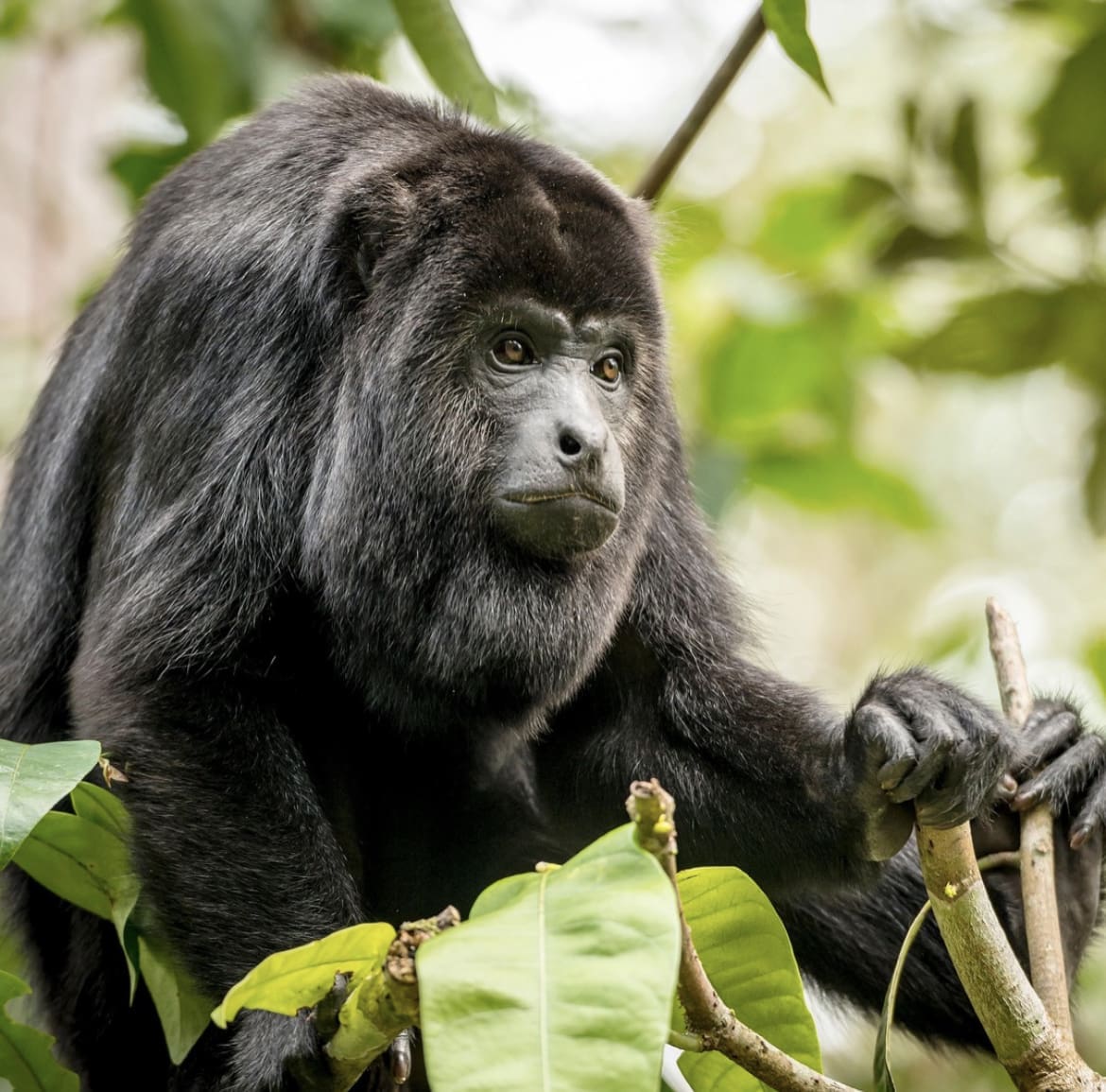Producing a sound so loud you’d be forgiven for thinking you’ve encountered a wind turbine in the jungle, the Howler Monkey can seem one of the most intimidating primates.
These creatures are not just about their volume. They’re a fascinating blend of raw nature, social complexity, and a touch of mystery. Let’s peel back the leaves and look closer, shall we?
What is the Howler Monkey?
Found swinging from Mexico to Argentina, these fur-covered philosophers are the epitome of the “jungle loudspeaker.” But it’s not all about decibels; these creatures are an essential part of their ecosystems, dispersing seeds and adding a layer of dynamism to the forest soundtrack.
Howler monkeys belong to the Alouatta genus, which holds the title for the largest New World monkeys. But it’s not just their size or even their sound that makes them stand out; it’s their attitude. Living the high life in the treetops, they watch over their domain like old-time lords, munching on leaves and letting everyone know who’s boss with their iconic roars.

What do Howler Monkeys Look Like?
Picture this: a monkey with a coat that could range from a sleek black to a fiery red, depending on their mood or the fashion season (not really, but let’s add some flair). They’ve got a prehistoric vibe going on, with a face that looks like it’s always deep in thought, pondering over the mysteries of the forest.
Their most notable feature, aside from their vocal cords, is a beard that could rival any hipster’s pride and joy, giving them a distinguished look. Their eyes, deep and thoughtful, are set in a face that speaks of ancient wisdom and untold stories.
How Big Are Howler Monkeys?
When it comes to size, howler monkeys are the heavyweights of the treetop world. Males can tip the scales at around 15 to 22 pounds, making them the sort of creature you’d notice if they decided to join you for a branch brunch. The females are a bit lighter, which is pretty standard in the monkey world.
Lengthwise, think of them as the length of a skateboard, tail not included. Their tails deserve a special shout-out, by the way. Prehensile, muscular, and utterly adept at grabbing branches, their tails are like a fifth limb, perfect for those moments when you need an extra hand, or, well, tail.
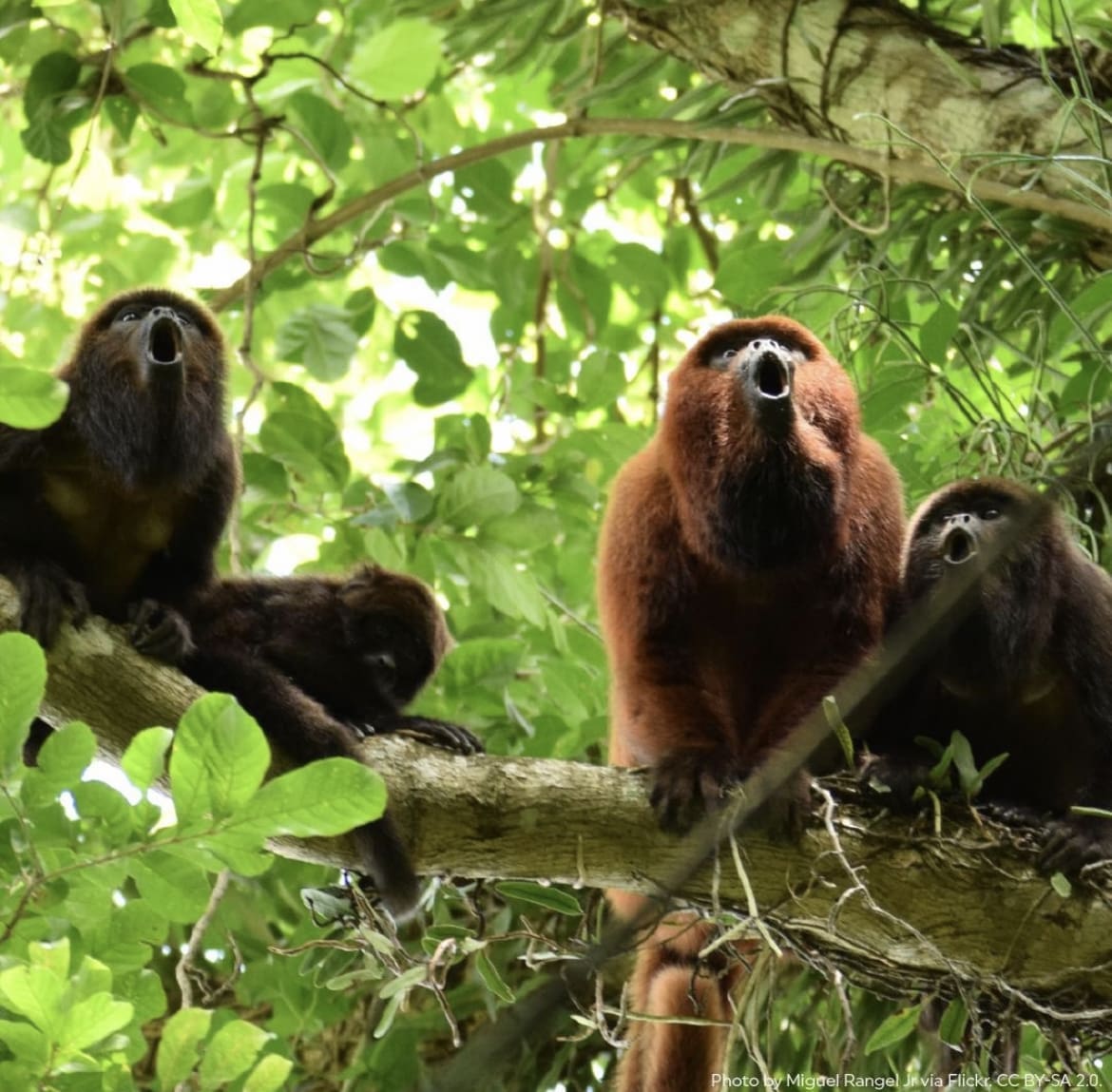
Skin
When you think about howler monkeys, their fur usually steals the spotlight, but let’s give a moment to their skin. It’s not something you’ll see a lot of, thanks to their lush coats, but it plays its part. Underneath that furry exterior lies skin that’s surprisingly sensitive, adapting to the sun’s kisses and the jungle’s caress. It’s like nature’s own version of a weather-adapting jacket, perfectly designed for the highs and lows of tree-top living.
The skin around their faces is particularly expressive. You might not get the full range of a Shakespearean actor, but for a monkey, they’re pretty darn expressive. This skin helps them convey moods to their troop members or signal when it’s time to quiet down and listen for predators or food.
Howler Monkey Teeth
Howler monkeys are equipped with a set of chompers that are a vegetarian’s dream. Their teeth are tailored for a life spent munching on leaves, fruits, and the occasional flower. They’ve got sharp incisors to tear through tough plant material, and their molars are flat and perfect for grinding down their fibrous diet.
But here’s a fun fact: they also have a unique dental adaptation for their loud calls. Their lower jawbone is enlarged, acting as a resonating chamber for their booming voices. It’s like having a built-in amplifier, ensuring their howl carries far and wide through the forest. Talk about natural design at its finest!
Howler Monkey Sound
Speaking of sounds, let’s get to the heart of the howler monkey’s fame. These guys don’t howl; they throw their voices across the jungle like seasoned opera singers. The secret behind their ear-splitting calls? A specialized, enlarged hyoid bone in their throat, acting like a natural loudspeaker.
This bone, coupled with a uniquely shaped larynx, lets them produce sounds that can travel three miles through dense forest. It’s not just for show, though. These calls help howler monkeys communicate across large distances, keeping troops together and warning others to stay out of their territory. It’s like their own social media network, but instead of tweets and DMs, it’s all about howls and bellows.
Imagine starting your day with a howler monkey alarm clock. No need for a snooze button; when these monkeys decide it’s time to wake up, the whole forest gets the message. It’s a sound that’s as impressive as it is vital for their social structure, a reminder of the power and beauty of nature’s design.
Howler Monkey Colouration
Ever wonder what a monkey fashion show might look like? Well, in the howler monkey world, it’s all about natural beauty and practicality. These creatures don’t stick to just one color; they rock a range from sleek black to fiery red and sometimes even a touch of golden brown. This isn’t just about looking good for the gram (though they’d probably nail it); their coloration has everything to do with blending into the treetops and sending the right social signals.
Youngsters and females often sport lighter hues, while the dominant males might show off in darker tones, a natural badge of their status. It’s a mix of camouflage and communication, proving that in the animal kingdom, style has substance.
What do Howler Monkeys Eat?
If howler monkeys had a Yelp rating for their diet, it would be 5 stars in the category of leafy greens. These guys are the ultimate vegans, with a menu that’s mostly leaves, topped with fruits, nuts, and the occasional flower for a bit of zing. But don’t think it’s easy being green; digesting all those leaves takes some serious gut power.
Howler monkeys have evolved a specialized stomach to break down tough leafy matter, which isn’t the most energy-efficient diet. This is why they’re often seen lounging around – they’re not lazy; they’re just conserving energy while their stomachs do the heavy lifting. So, the next time you’re feeling guilty about a lazy day, just remember: you’re just being a howler monkey about it.
Howler Monkey Social Structure
Think of howler monkeys as living in the jungle’s version of a tight-knit community. They’re all about the group life, with troops that can number anywhere from a cozy family of six to a bustling crowd of over 20. Each troop has a clear hierarchy, with a dominant male leading the charge and several females and their offspring making up the bulk of the group.
This social structure isn’t just for fun; it plays a crucial role in their survival. The dominant male gets first dibs on food and mates, but it’s not all perks – he’s also the troop’s main protector, leading the howl at dawn and dusk to mark their territory and keep rival troops at bay. Meanwhile, females form strong bonds, helping each other raise the young and maintain social harmony. It’s a system that values cooperation and community, proving that even in the animal kingdom, it takes a village.

How Do Howler Monkeys Reproduce?
Swipe right for howler monkey dating: it’s complicated, seasonal, and all about that high-ranking male appeal. The dominant male gets the privilege of mating with the females in the troop, but it’s not just about brute strength. These guys need to show they can provide, protect, and also have a certain je ne sais quoi (a.k.a. a great howl).
Females give birth to a single baby after about six months of pregnancy, which is like their version of an ultra-marathon. These infants are the apple of the troop’s eye, with everyone pitching in to help. It’s a true community effort, where aunts, sisters, and even the occasionally attentive male contribute to babysitting. This communal care ensures that even in the dense and dangerous jungle, the next generation has the best shot at survival.
How Long Do Howler Monkeys Live?
Ever wondered how the laid-back, leaf-eating lifestyle impacts longevity? Howler monkeys are the chill grandparents of the monkey world, with lives that can stretch up to 20 years in the wild. That’s a lot of sunrises, leaf salads, and howl concerts.
Their secret to a long life? It might just be their slow-paced lifestyle and vegetarian diet, proving that sometimes, taking it easy and eating your greens isn’t just good advice for humans. In captivity, with the absence of predators and regular medical care, these monkeys can live even longer, sometimes reaching their late 20s. It seems that for howler monkeys, life is not about the speed but the quality of the journey.
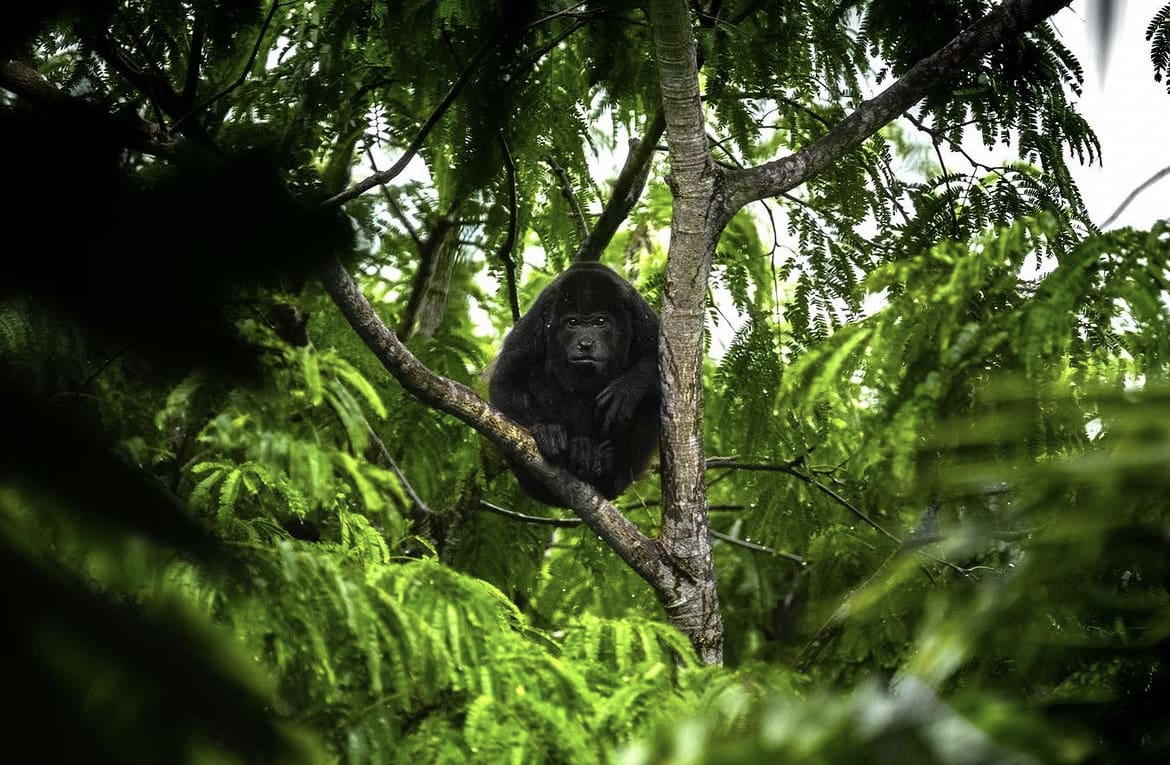
Is the Howler Monkey Dangerous?
Let’s clear the air: despite their loud mouths, howler monkeys are the pacifists of the primate world. They’re not out to start trouble or pick fights with humans. Their howls, though intimidating, are more about communication than aggression.
Sure, like any wild animal, they deserve respect and space. Trying to feed or interact with them can lead to defensive behavior, which is just them saying, “Please, respect my personal space.” So, are they dangerous? Only if you’re a leaf. For the rest of us, they’re a reminder that you can be heard loud and clear without ever having to throw a punch.
Are Howler Monkeys Territorial?
Imagine having such a powerful voice that you could claim a piece of the jungle by just yelling from your treetop. That’s exactly how howler monkeys roll. They’re the original shout-your-claim kind of deal, using their booming howls to mark their territory and keep rival troops at a respectful distance. These vocal boundaries allow them to avoid physical confrontations, which is pretty smart considering the energy it takes to swing around and look for food all day.
Territories can overlap, but with their distinct calls, it’s like having an invisible fence, ensuring everyone knows whose tree is whose. This system reduces conflicts and helps maintain a balanced distribution of resources among the different troops. It’s not about being antisocial; it’s about respecting personal space, a concept some humans could certainly learn from.
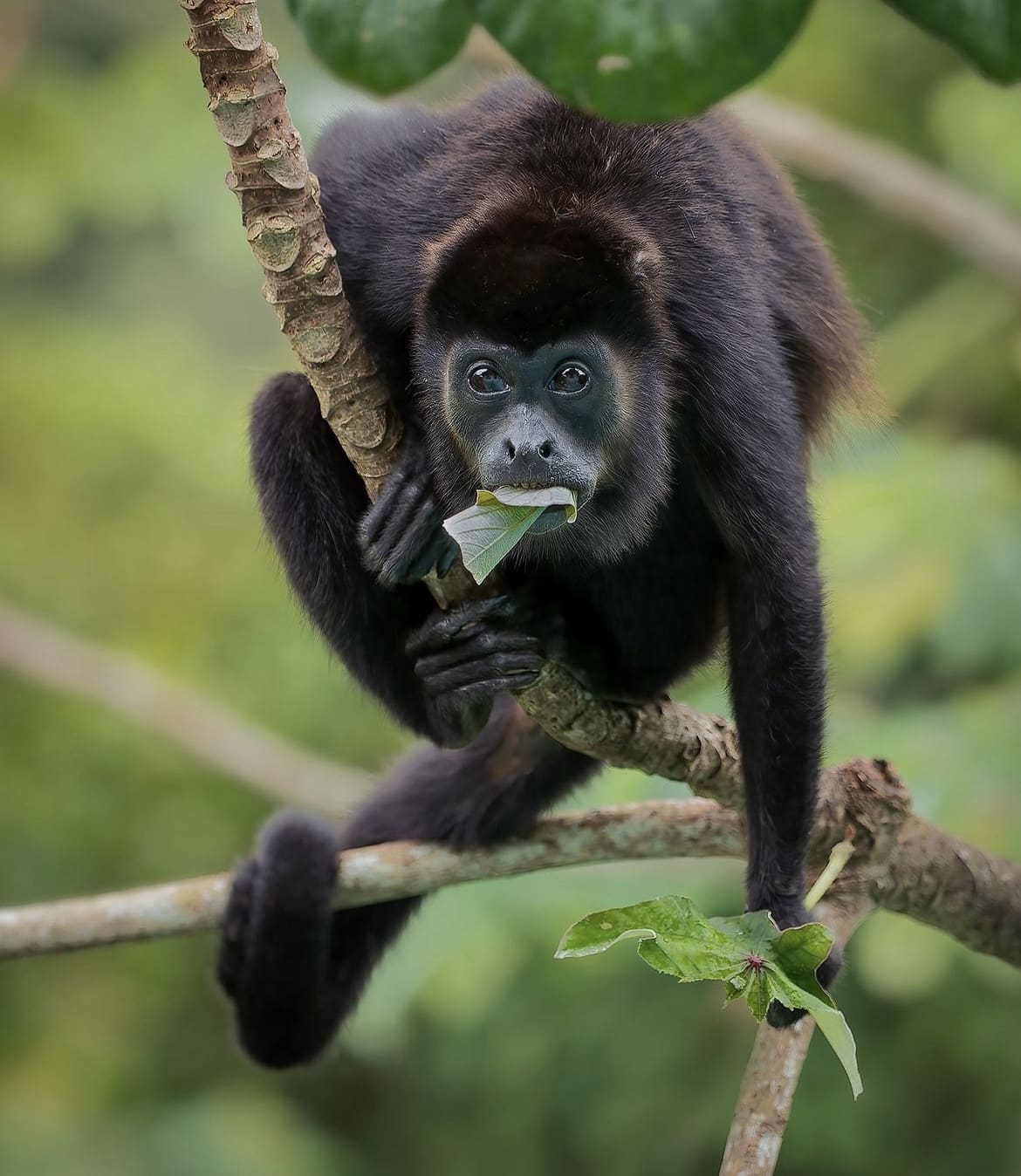
How Fast Are Howler Monkeys?
If you’re picturing howler monkeys as the speed demons of the treetops, you might want to dial those expectations down. These monkeys are more about the leisurely stroll… well, swing. Their lifestyle doesn’t require them to be fast; instead, they’re all about strength and precision. Moving through the trees with a deliberate grace, they conserve energy for more important tasks, like foraging for food and socializing.
Their prehensile tails act as an extra limb, allowing them to navigate the canopy with a slow but steady rhythm. This pace matches their energy-efficient diet and laid-back attitude, proving that in the howler monkey world, slow and steady doesn’t just win the race—it’s the only way to race.
Where Do Howler Monkeys Live?
Howler monkeys are the ultimate treehuggers, spending most of their lives in the canopies of Central and South America’s rainforests. From the southern parts of Mexico down through Brazil, these monkeys have adapted to a wide range of forested environments, including dry forests, mangroves, and even cocoa plantations.
Their home is where the leaves are, so they choose areas rich in foliage to support their vegetarian diet. However, they’re not just hanging out in any tree; they prefer those that offer a great view for spotting predators and other troops, as well as a good mix of sun and shade. Think of them as the meticulous homebuyers of the animal kingdom, always looking for that perfect treehouse.
How Many Howler Monkeys Are There in the Wild?
Counting howler monkeys in the wild is less like a census and more like trying to take attendance at a massive, never-ending forest party where the guests are constantly moving. Estimates vary, but what’s clear is that their populations are under pressure. Deforestation, habitat fragmentation, and human encroachment are big-ticket items on the list of threats that make their lives harder by the day.
While some species of howler monkeys are doing okay, others are teetering on the edge of vulnerability or even endangerment. It’s a mixed bag, with their survival largely dependent on the conservation of their habitats and the human willingness to live in harmony with these vocal neighbors.
Are Howler Monkeys Endangered?
The short answer is: it’s complicated. The International Union for Conservation of Nature (IUCN) lists several species of howler monkeys with statuses ranging from “Least Concern” to “Critically Endangered.” For example, the black howler monkey is considered vulnerable, a status that signals a need for action to prevent slipping into endangerment.
Their biggest challenge? Losing their homes to make way for agriculture, urban development, and other human activities. It’s a stark reminder that the concert of life requires all its players, and we’re the ones currently messing with the volume control.
Threats to Howler Monkeys in the Wild
If howler monkeys had a list of grievances, top of the list would be habitat loss. The relentless expansion of human activity eats away at the forests they call home, leaving them with fewer places to hang their hats (or tails). But it’s not just about losing their homes; fragmentation of their habitat isolates populations, making it harder for them to find mates and weakening their gene pool.
Then there’s the issue of hunting and the pet trade, practices that not only remove howler monkeys from the wild but also expose them to diseases and stress. Climate change also throws a wrench into their lives, disrupting food availability and making extreme weather events more common.
Where to See Howler Monkeys
If you’re itching for a howler monkey encounter, there’s good news: you don’t have to crash a secret animal party to see them. These monkeys are residents of various protected areas and national parks across Latin America. From the misty canopies of Costa Rica’s Monteverde Cloud Forest to the lush expanses of Brazil’s Amazon rainforest, howler monkeys are out there, doing their thing.
For a surefire sighting, consider places like Belize’s Community Baboon Sanctuary (don’t let the name fool you; it’s all about howler monkeys) or the Mayan ruins of Palenque in Mexico, where the ancient and the wild blend seamlessly. These spots not only offer a chance to see howler monkeys in their natural habitat but also to immerse yourself in the rich biodiversity of tropical forests.
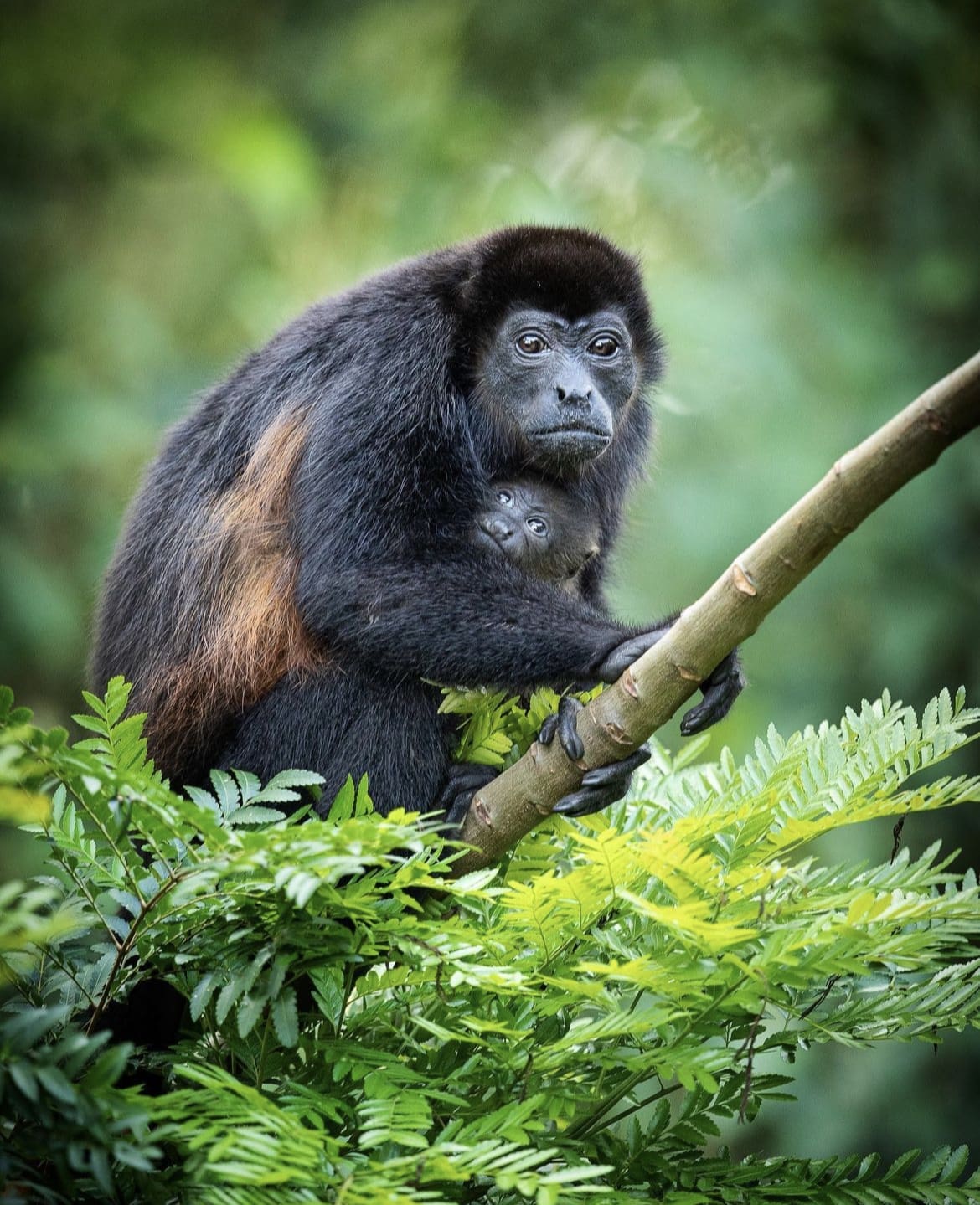
Tips for Spotting Howler Monkeys
Want to maximize your chances of a howler monkey encounter? Here are some pro tips:
- Early Bird Gets the Worm: Or in this case, the early riser hears the howl. Howler monkeys are most vocal at dawn and dusk, so set that alarm and embrace the morning mist.
- Look Up: Howler monkeys are arboreal, spending most of their time in the treetops. Keep your eyes peeled upward, and watch for movement among the leaves.
- Stay Quiet: The quieter you are, the less likely you are to startle them or interfere with their natural behavior. Plus, it’s just good jungle etiquette.
- Bring Binoculars: To really get a good look without having to invade their personal space, binoculars are your best friend.
- Hire a Local Guide: Not only does this support the local economy, but guides have eagle eyes and a wealth of knowledge. They can often spot wildlife that you’d walk right past.
Facts About The Howler Monkey
- World’s Loudest Land Animal: Their howls can be heard up to 3 miles away in dense forest.
- Leaf-Eaters: They have a multi-chambered stomach to help digest tough leaves.
- Long Tails: Their prehensile tails can be as long as their body and act as a fifth limb.
- Social Creatures: They live in groups of up to 20 individuals, with a complex social structure.
- Longevity: They can live up to 20 years in the wild and even longer in captivity.
Myths About The Howler Monkey
- They’re Aggressive: Despite their loud calls, they’re quite peaceful and avoid conflict.
- Only Eat Bananas: Their diet is predominantly leaves, not fruits.
- Nocturnal: They are actually diurnal, most active during the day, despite their eerie early morning howls.
- They Howl at the Moon: Their howling is about communication and territory, not lunar phases.
Embarking on a journey to understand howler monkeys reveals a world where nature’s complexity and beauty know no bounds. These creatures are not just the soundtrack of the forest but vital players in their ecosystems, deserving of our respect and protection.
As we close this chapter on howler monkeys, let’s carry forward a sense of wonder and a commitment to coexisting with the natural world. After all, every howl tells a story, and it’s up to us to listen.

